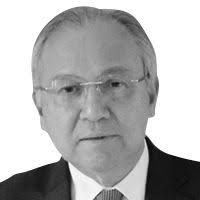President Duterte’s ultimate vision for the Philippines

When President Duterte ordered the Boracay closure, many were skeptical. On October 26, the famous beach resort will reopen – and this is where we will see what political will and determination can do. Boracay is the microcosm of what President Duterte wants to do for the country.
Despite global uncertainties, the economic growth of the Philippines will continue to be strong, according to analysts and financial institutions like the Washington-based World Bank that has maintained its growth forecast of 6.7 percent for 2018 and 2019. In the latest report by the Asian Development Bank, the country’s economic growth is forecast at 6.8 percent for 2018 and 6.9 percent for 2019.
The same positive outlook is shared by the First Metro Investment Corporation (of the Metrobank Group) that continues to be bullish about the economy, saying the country’s gross domestic product may even expand to 7.5 percent, surpassing the government’s target of 7 percent this year.
Admittedly, there are apprehensions because of inflation that reached 5.2 percent in June due to a confluence of factors that include higher oil prices in the global market, higher cost of rice, and the implementation of the TRAIN (Tax Reform for Acceleration and Inclusion) law that took effect in January. However, the inflation rate is expected to taper off towards the end of the year as the price of crude oil slows down, the cost of rice declines (especially now that National Food Authority retail stores have started selling NFA rice in many parts of the country), and the impact of the TRAIN law starts to dissipate.
One encouraging development that should be highlighted is the “stable” outlook from international debt watchers Moody’s Investors Service (which affirmed its rating on the Philippines at “Baa2”) and Fitch Ratings (that maintained the Philippines’ rating at “BBB”). Even better is Standard’s and Poor’s raised credit rating from “BBB stable” to “BBB positive” – recognizing the bold economic reforms being undertaken by the Duterte administration to fix the tax system and ensure sufficient revenue to finance the government’s “Build, Build, Build” infrastructure program and expand social services with improved public health and upgraded educational system, among many others.
The “Build, Build, Build” program is expected to attract even more investments and will put us in a position to take advantage of the regional economic integration agenda in ASEAN with its huge market potential of $2.6 trillion and over 622 million population. Currently, 35 of the 75 flagship infrastructure projects of the government under “Build, Build, Build” have passed the requisite approvals and are poised to begin construction anytime soon.
The Asian Development Bank noted that the massive infrastructure program can help reduce poverty incidence in the country, with the large-scale nature of the projects (roads, bridges, tollways, flood control systems, etc.) creating a lot of jobs during the construction phase, and enhancing growth and investment opportunities for all including small and medium-sized enterprises. According to National Economic and Development Authority chief Ernie Pernia, the unemployment rate has been on a downward trend, with the government on track to achieve its target of generating 900,000 to 1.1-million employment in 2018.
An ultimate vision of the president – which he will probably talk about in his State of the Nation Address (SONA) tomorrow – is to spread the wealth out to the poorest regions in the country, with the belief that charter change towards a federal system of government will help lessen inequality in the Philippines.
The way the president sees it, so many provinces are being left out on their own and are dependent entirely on “Imperial Manila” where power – political and financial – is concentrated. In one of his speeches during the campaign period for the May 2016 elections, the then-Davao City mayor lamented the fact that the current system has allowed a group of politicians to run the nation in one single office.
The president wants federalism through charter change to be his legacy to the people, bridging the income gap by empowering local government units. While the economy continues to perform strongly, this is not enough to reduce poverty (with the administration targeting to cut down the poverty rate to 14 percent by 2022). One of the reasons is that almost all of the top earning industries such as manufacturing and business process outsourcing are in Metro Manila and its environs, while in poorer regions (many of them in Mindanao), the predominant source of livelihood is fishing and farming.
Adam Garrie, in a recent article titled “Economic Growth, the Wealth Gap and Federalism: Duterte’s Plan to Make the Philippines Work for All,” noted that “while the Philippine economy continues to grow, nearly 50% of the wealth of the entire nation remains in the Metro Manila area – just as it was prior to Duterte’s leadership. When Metro Manila is combined with wealthy regions of Luzon, one finds that this accounts for over 70% of the nation’s wealth, thus leaving Visayas and Mindanao without the opportunity to accrue the benefits of overall economic growth.”
It is heartening to note that a group of young Filipino-Chinese entrepreneurs – some as young 21 – are looking at areas outside of Metro Manila for possible business ventures, in particular the regions in Mindanao. These young professionals, many of whom live in Metro Manila but whose parents/ancestors come from the provinces, see the wisdom of the president’s push to decentralize economic development from Metro Manila which they consider as already very congested. These young entrepreneurs represent the future of our country. They share the same vision of President Duterte.
* * *
Email: [email protected].
- Latest
- Trending




























